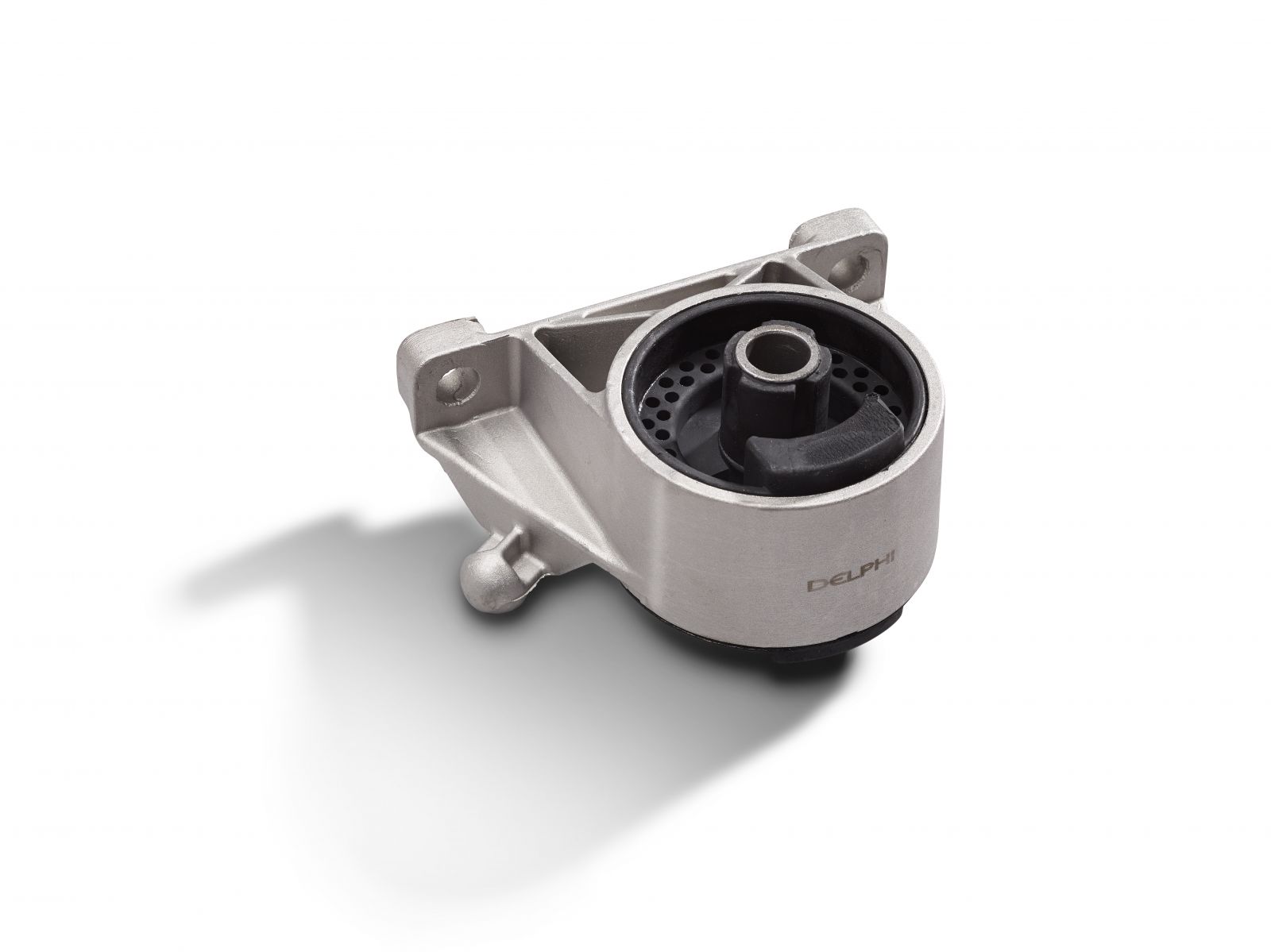Suspension

How to Service Engine MountsA faulty or worn engine mount is one of the main causes of engine vibration and noise. And whilst this can be concerning for the vehicle owner, by understanding why they fail, what to look out for and how to replace them, you can help keep your customer’s car running smoothly, for a quiet and comfortable ride. Here, leading manufacturer Delphi Technologies, shows you just how to do that.
How do engine mounts work? As its name suggests, the engine mount, also known as a motor mount, secures the engine to the vehicle’s chassis; one end bolts to the engine block, and the other to the frame of the car. As well as holding the engine firmly in place, the vulcanized rubber mount acts as an insulator between the vehicle frame and the engine components, helping to minimize noise, vibration and harshness (NVH) for a comfortable and quiet ride. In most vehicles there are three engine mounts, plus one or two transmission mounts.
Types of engine mount There are three types of engine mounts, and depending on the application, vehicle manufacturers might use any combination of these:
Why do engine mounts fail? Engine mounts are subjected to constant high dynamic stress, and just like anything made of rubber, will deteriorate overtime; the rubber can crack, tear and will almost certainly loose its firm, but elastic characteristics. In hydraulic mounts this can cause the fluid to leak out and potentially the mount to collapse. Whilst wear and tear is more common in older, higher mileage vehicles, hard shifting through the gears or excessive high idling can accelerate the process. Same goes for oil or other fluids, which can gradually erode the rubber.
What are the symptoms of a faulty engine mount? Often a quick visual check will identify any wear or damage such as cracks, tears, fluid leaks or separation in the rubber-to-metal bonding, however, there are a few common symptoms to watch out for:
When to replace engine mounts? Although engine mounts are not included as part of any routine maintenance schedule, it’s advisable to check them during regular servicing. After all their service life can vary greatly based on the age of the vehicle, mileage, driver behaviour etc. If you spot any signs of wear or tear, the mount should be replaced as soon as possible – as well as noise and vibration, a broken mount can cause damage to other components. For example, excessive engine movement, can cause the belt-driven fan to hit the radiator and/or hose, and potentially the throttle linkage to seize. Remember if one mount fails, chances are the others are not too far behind as they will have been subjected to the same conditions. Because of this, it’s always advisable to replace all engine mounts at the same time.
How to replace a failed engine mount? With the right tools, and know-how, engine mount replacement is a relatively straight-forward job. Follow the step-by-step instructions below for a best-practice repair:
|
Related Articles Related Downloads |